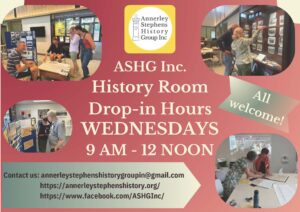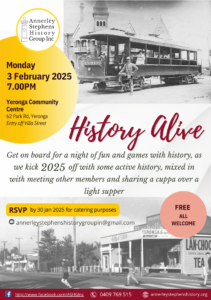Queensland banned unlicensed people buying, selling, using or having fireworks in 1972. The current fine is >$44,000 or six months in jail. Before that, fireworks were the third largest cause of eye injuries in the State. The ACT banned private fireworks in 2009.
Bonfire Night
My family moved in 1954 to Colmslie (now Morningside) from the Housing Commission area at Herston where the former Australian Air Force and US Army WW2 huts had been converted to alleviate a shortage of accommodation in Brisbane. The change from crowded and noisy shared buildings to a rural setting of the former Coles Dairy on Lytton Road opened up some amazing opportunities. The open paddocks sloped to a bend in the creek that ran to the Brisbane River near the Cairncross Graving Dock. The local children had open access to swim in the creek, explore the swamps and paddle home-made canoes. It is this setting where I remember my first personal experience with fireworks.
Weeks before the big night, men of the neighbourhood, consisting of Coles, Pope, Charlton, Grant and McKell families would choose a good size straight tree, cut it down and replant it in a paddock of the former dairy. A shared lane ran off 347 Lytton Road, leading to the few houses of Fred and Pegg Charlton, old Mr Coles and his wife and of course the McKells. In the rented house of Coles’ daughter Mrs Broom, which had its own driveway was newly married Jack Grant, a noted hockey player from Bulimba. The Popes lived on the next property on Lytton Road in a white mansion with giant pillars at the front. On the opposite side of the creek was another former dairy where the Balmoral State High School would be built and ready to open in 1958. Other resting paddocks were rarely use by cattle transported to the Cannon Hill Saleyards and destined for the local abattoir. This was one large area full of combustible material.
We kids, led by John and Laurie Charlton would gather timber from the partly forested paddocks, swamp and mangrove in the creek that drained as far away as Seven Hills. It ran through what was later the Colmslie Hotel car park and was joined by a tributary that drained from the Cannon Hill Saleyards. Everyday the pile grew against the pole like a tepee. Even old tyres found in the creek and by the road were added because they blazed fiercely for a long time.
My sisters Margaret and Heather and Marilyn Pope were in charge of making “the Guy”. This was essentially a scarecrow dressed in old clothes with a hat. A rope over a fork at the top of the pole was used to hoist him to the top on the afternoon of the big night. Newspapers, collected over the weeks were stuffed under and between the timber, in preparation for ignition. It was hard to return home for dinner – so filled with exciting expectation. No homework from school that night but I was puzzled as to why “the Guy” needed a hat at night!
We gather after an early dinner, torches in hand or with a kerosene lamp, to find our way home later. The excitement was in the anticipation. A major event was about to happen. Other, smaller fires began to appear across the creek at Morningside. Each child was given a lighted match and we lit the newspaper at the base. The flames began to lick the timber. The small sticks caught fire quickly and the yellow-gold flames reached upward. I thought I heard “the Guy” scream. Some of creek timber was still damp and steam issued forth. Soon, a warm night turned hot from the roaring fire. Too hot to sit near and the ladies quickly moved their chairs well back. The whole paddock was like a modern day floodlit football field and the perfectly planned fire reached to the evening stars. Black smoke billowed from the car tyres and ensured a lasting fire. The flames ignited the newspaper inside “the Guy” and he was gone in seconds. That part seemed sad to me but it would be many years before I thought about it again.
Fireworks
Mrs Pope was elderly and so required a chair as did some of the mothers, although they were very busy issuing safety instructions that would go mostly unheeded.
Private shoe boxes held unseen collections that had been purchased with months of saved pocket money. My mother wisely rationed our precious items. There were lots of “tom thumbs” (small bungers) but some that required a little finesse, like her “Catherine wheel”, which our mother nailed to the posts of the barb wire fence. They had to be loose on the nail in order to spin. The sparks made a wondrous spectacle. My sisters loved the “roman candle”. This was a cone that lit at the top and spurted like Mount Versuvius. Being a boy, I liked the big tuppenny (2¢) bungers for an explosive event. Too dangerous to hold but so loud, you could feel the vibrations in the air. Everyone was ordered to stop at one stage. It was time for the “sky rockets”. These looked like a large bunger taped to a stick, either placed upright in a bottle or a can. Only adults were allowed to handle this projectile. You lit the taper on a slow burn and then suddenly with a woossssh, it went skywards at amazing speed, with a coloured tail lighting the night. We loved roaming the paddocks the next day and collecting the remains.
Jackie Grant’s box of glory
Newly married and still spending like a single man, Jack had been hording for weeks. His huge collection of explosives, including big sky rockets, and amazing spinning wheels and “jumping jacks” was hidden from view (and small prying hands) in a box. Everyone enjoyed his collection and amazed at the variety. He had enough for a long night.
After the sky rockets, we still have a few crackers left. “Jumping Jack’s” were an unpredictable item. A folded tube of gunpowder tied with cotton and glued paper. When lit, it exploded and went in any direction on each twist. Suddenly, one of Jack’s flew toward Granma Pope, between her legs and under the chair. Women and girls screamed and young boys raced after the demon. Next, it shot against Jack’s hidden treasure, went into the box and exploded again and again. It set off a chain reaction like I have never seen the like since. Roman candles, Catherine wheels, and exploding crackers sent the crowd in all directions. You just could not hope for a better time!
Later Years
In the same paddock beside our house in 1959, my school friend Len Elwell whose father was in the army and had “borrowed” some out-of-date flares, brought a few along. There was a big bang and then floating colour lit the night. Terrified horses in nearby paddocks plus complaints to police meant that this was a one-off occasion.
As the neighbourhood children grew up, the family event dissipated and my memories of the 1960s’ fireworks are only of exploding letterboxes and howling dogs. My own dog “Rusty”, who had been left alone in our house in 1950, ran away while we were celebrating with family friends. When I started my own family and lived at Balmoral in the 1980s, “Cracker Night” was a subdued event for my daughters Kate and Jane – just sparklers. And they still enjoyed waving them in the night air and thrilled at how the sparkle seemed to hang in the dark.
My memories of these happy events are still vivid and I look forward to Riverfire at Southbank each year.




